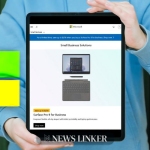The cyber threat landscape is ever-evolving, and recent developments have highlighted a particular menace: Darkgate malware. This malicious software exploits the widespread trust in common file formats such as XLSX, HTML, and PDF. Aimed at Windows systems, Darkgate employs sophisticated techniques via phishing emails to infiltrate and compromise user accounts. This malware’s ability to remain undetected while causing significant harm makes it a substantial threat to data security.
Forcepoint researchers discovered that Darkgate malware is distributed through phishing emails containing harmful attachments such as XLSX, HTML, or PDF files. These attachments, once opened, execute commands that take over user accounts, replicate themselves, and steal sensitive information. The malware’s persistence lies in its ability to remain unnoticed, putting users at risk of data loss, fraud, blackmail, and exposure of confidential information.
Distribution Tactics
The malware campaigns often use a fake Intuit QuickBooks invoice PDF to lure victims. Once the recipient clicks a link within the document, they are redirected to a geofenced URL that downloads a malicious Java Archive (JAR) file. This file then executes further commands to download additional malware payloads, often using common utilities like PowerShell to extract and run the files.
Technical Insights
Analysis of the malicious PDF revealed it contained an embedded hyperlink that downloaded a JAR file. This JAR file included code to download a ZIP file, which was extracted using a PowerShell command, demonstrating the malware’s use of legitimate system tools for malicious purposes. The ZIP file contained an AutoIt script used to execute further commands, indicating the use of a sophisticated, multi-stage attack strategy.
Key Takeaways
- Phishing emails remain a primary vector for malware distribution.
- Common file formats like XLSX, HTML, and PDF can be weaponized.
- Users should be cautious when opening attachments from unknown sources.
The malware’s reliance on trusted file formats and its ability to exploit common tools highlight the need for heightened vigilance and robust security measures. Techniques used in the Darkgate campaign, such as embedding malicious links in PDFs and utilizing PowerShell for extraction, emphasize the importance of comprehensive security protocols. Users must remain aware of these evolving threats and continuously update their security practices to mitigate risks.
This malware campaign’s historical context shows a significant evolution in tactics. Earlier malware campaigns often relied on simpler methods like direct executable downloads or email attachments. Darkgate’s multi-stage approach, involving phishing, Java Archive downloads, and AutoIt scripts, marks a progression towards more sophisticated and challenging-to-detect techniques. Additionally, the use of geofenced URLs and PowerShell commands to extract and run files reflects an increasing trend of leveraging built-in system tools to avoid detection.
Comparing this with other recent malware campaigns, we see similar strategies, such as multi-stage payloads and the use of common utilities. However, Darkgate’s specific focus on trusted file formats and its ability to operate undetected for extended periods set it apart. This persistence and adaptability make it a particularly concerning threat in the current cyber landscape.










